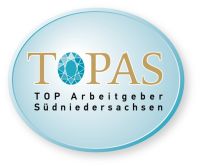New concept for interactive journals
From January 2016 onwards, all two-stage journals published by Copernicus Publications will see changes to the way their papers are archived and paid for. The new concept emphasizes that discussion papers are manuscripts under review and connects final revised papers with their corresponding discussion papers in a clearer and more consistent way.
Copernicus Publications currently publishes 37 open-access journals; 17 of them apply a two-stage publication process with public peer review and interactive public discussion (the so-called Interactive Public Peer ReviewTM). The discussion and peer review of submitted papers are handled in the public discussion forums, while final papers, upon acceptance, appear in the corresponding peer-reviewed journals. Each paper published in an interactive peer-reviewed journal has a companion paper that was published in the corresponding discussion forum prior to peer review.
The concept of Interactive Public Peer ReviewTM has been applied to Copernicus Journals since 2001. It has become evident, however, that it is necessary to make it clearer that the discussion paper is simply an intermediate step within the peer-review process. Thus, Copernicus is implementing changes to the current library and payment model.
New library concept
The first step is that manuscripts submitted to interactive journals will no longer go through typesetting and proofreading before their publication as a discussion paper. Thus, they will look less like a publication and more like pre-print papers. The discussion paper will be the PDF uploaded by the author, with an added header and footer indicating the journal to which the manuscript was submitted for review. The manuscript will still be citable, but the citation (which will appear in the footer of the author’s PDF) will indicate that the paper is under review.
In order to stress that the discussion paper is only the first step to the final paper, discussion papers will no longer be archived in volumes and issues in a separate online library. With the new concept, a final revised paper and its corresponding discussion paper are archived together. There will be a main page that includes all the information relating to the paper in separate tabs, such as metrics, related articles, and the list of peer-review comments and the discussion paper.
With this change, Copernicus is also introducing the new “Assets” tab, which is a one-stop resource for different materials relating to the paper. These can include maps of the research area, data sets, samples, and videos.
New payment concept
The new overall concept that sees a discussion paper as only a manuscript under review and, as such, an intermediate step in the peer-review process, also requires changes in the way payment is handled.
At present, authors publishing in one of the interactive journals pay article processing charges (APCs) for the discussion paper rather than for the final peer-reviewed article. As discussion papers have a different format and layout, the discussion-paper style results in three times more pages than the classic manuscript style.
In the new model, the APCs increase threefold to account for the fact that they will be charged per manuscript page, rather than per discussion page. As there are three times fewer pages in a paper in classic manuscript style than in one in discussion-paper style, the overall cost of publishing a paper will be roughly the same.
These changes apply for all papers published after 1 January 2016 in all journals with Interactive Public Peer ReviewTM.




